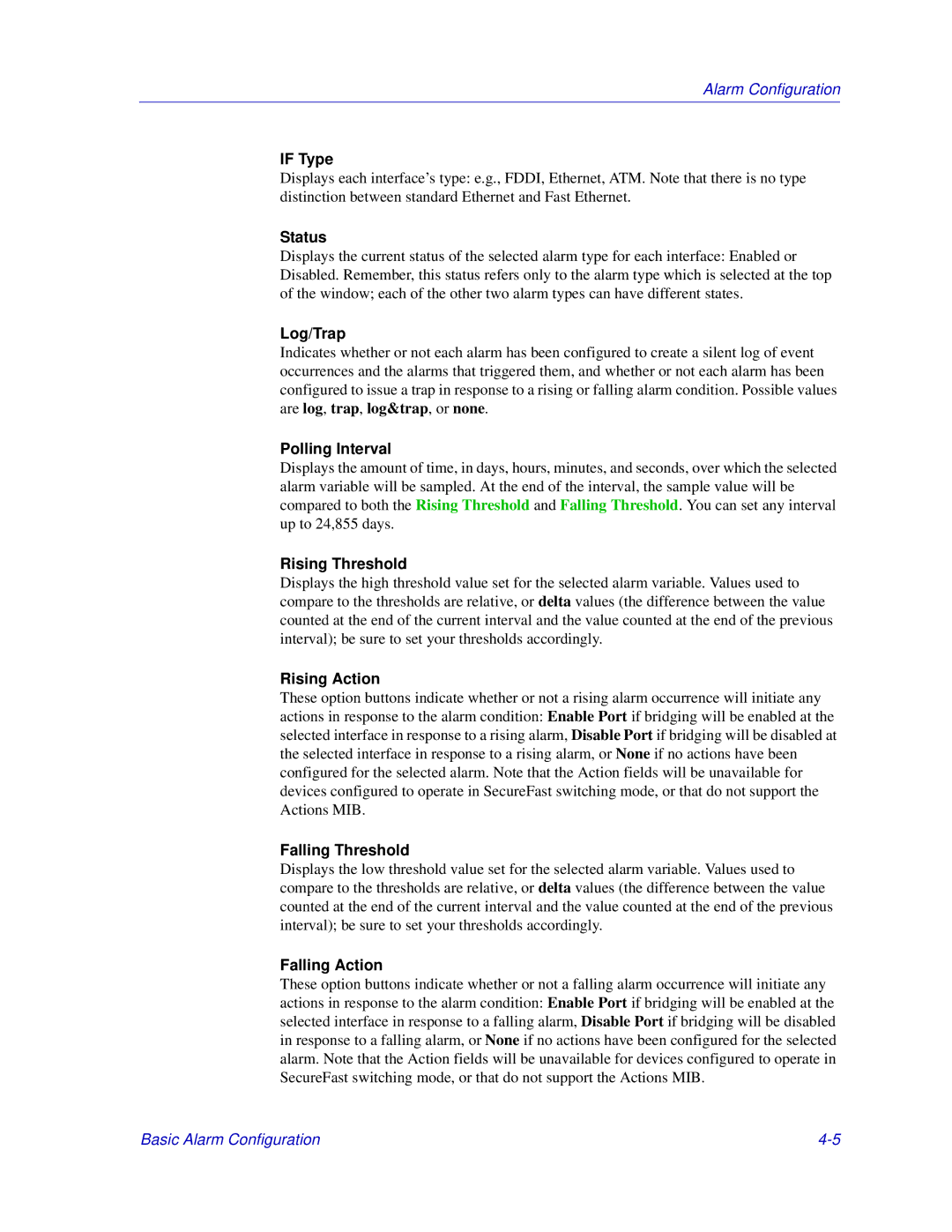Alarm Configuration
IF Type
Displays each interface’s type: e.g., FDDI, Ethernet, ATM. Note that there is no type distinction between standard Ethernet and Fast Ethernet.
Status
Displays the current status of the selected alarm type for each interface: Enabled or Disabled. Remember, this status refers only to the alarm type which is selected at the top of the window; each of the other two alarm types can have different states.
Log/Trap
Indicates whether or not each alarm has been configured to create a silent log of event occurrences and the alarms that triggered them, and whether or not each alarm has been configured to issue a trap in response to a rising or falling alarm condition. Possible values are log, trap, log&trap, or none.
Polling Interval
Displays the amount of time, in days, hours, minutes, and seconds, over which the selected alarm variable will be sampled. At the end of the interval, the sample value will be compared to both the Rising Threshold and Falling Threshold. You can set any interval up to 24,855 days.
Rising Threshold
Displays the high threshold value set for the selected alarm variable. Values used to compare to the thresholds are relative, or delta values (the difference between the value counted at the end of the current interval and the value counted at the end of the previous interval); be sure to set your thresholds accordingly.
Rising Action
These option buttons indicate whether or not a rising alarm occurrence will initiate any actions in response to the alarm condition: Enable Port if bridging will be enabled at the selected interface in response to a rising alarm, Disable Port if bridging will be disabled at the selected interface in response to a rising alarm, or None if no actions have been configured for the selected alarm. Note that the Action fields will be unavailable for devices configured to operate in SecureFast switching mode, or that do not support the Actions MIB.
Falling Threshold
Displays the low threshold value set for the selected alarm variable. Values used to compare to the thresholds are relative, or delta values (the difference between the value counted at the end of the current interval and the value counted at the end of the previous interval); be sure to set your thresholds accordingly.
Falling Action
These option buttons indicate whether or not a falling alarm occurrence will initiate any actions in response to the alarm condition: Enable Port if bridging will be enabled at the selected interface in response to a falling alarm, Disable Port if bridging will be disabled in response to a falling alarm, or None if no actions have been configured for the selected alarm. Note that the Action fields will be unavailable for devices configured to operate in SecureFast switching mode, or that do not support the Actions MIB.
Basic Alarm Configuration |
